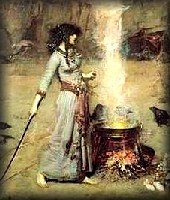|
Synonyms .. mountain tobacco eopaeds bone
Parts used .. root and flowers
Habitat .. arnica montana or leopards bone is a perenial herb, indienous
to Central Europe, in woods and mountain pastures. It has been found in England but is probably and escape. it grows
in most countries.

Description .. The leaves form a flat rosette, from the centre of which rises a flower stalk. 1 to 2
feet high, bearing orange - yellow flowers. The rhizome is dark brown, cylindrical, usually curved, and bears brittle wiry
rootlets on the surface.
Medicinal Action and Uses .. Arnica is a popular remedy. The flowers are use in preference to the rhizome.They
have a discutient property. The tincture is used for external applicationto sprains, bruises, and wounds, and as a paint for
chilblains when the skin is unbroken. repeated applications may produce severe inflamation. It is seldom used internally,
because of it's irritant effect on the stomach. It's action is stimulant and diuretic, and it is chiefly used in low fevers
and paralytic affections.

|
 |
|
herb of the month
|
 |
 |
 |
|
arnica

Constituents .. A bitter yellow crystalline principle, Arnicin, and a volitile oil. Tannin and
phulin are also present. The flowers are said to contain more Arnicin then rhizome, but no tannin.
Cultivation .. Arnica thrives in a mixture of loam, peat, and sand. It may be propagated by root
division or from seed. Divide in spring. Sow in early spring in a cold frame, plant out in May.
The flowers are collected entire and dried, but the receptacles are sometimes removed as they liable to be attacked by
insects.
The root is collected in autumn after the leaves have died down.
|
|
 |
 |
 |
|
|
|

